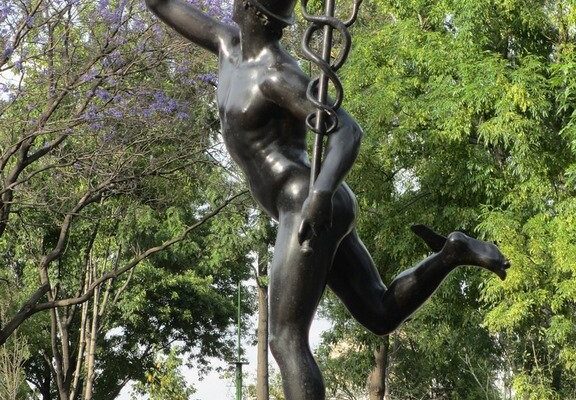Parque Alameda Central
Parque Alameda Central is a picturesque oasis that sprawls in the historic center of Mexico City. This urban garden is recognized as the oldest in Mexico and the Americas: it was laid out more than 400 years ago by order of the Viceroy of New Spain. The territory of the park is bounded by four streets of the city: in the north – Avenida Hidalgo, in the east – Angela Peralta, in the south – Avenida Juarez, in the west – Dr. Mora. Alameda Central is a favorite place for strolling. Comfortable benches, the rustle of emerald leaves and cool shade – this is what tired travelers who are bored with the roar of cars and the bustle of the capital come here for.
.Alameda Central has come to symbolize the traditional Mexican park and gave its name to other urban gardens that have since sprung up all over the country. These, however, do not compare favorably to the emerald pride of Mexico City’s residents.
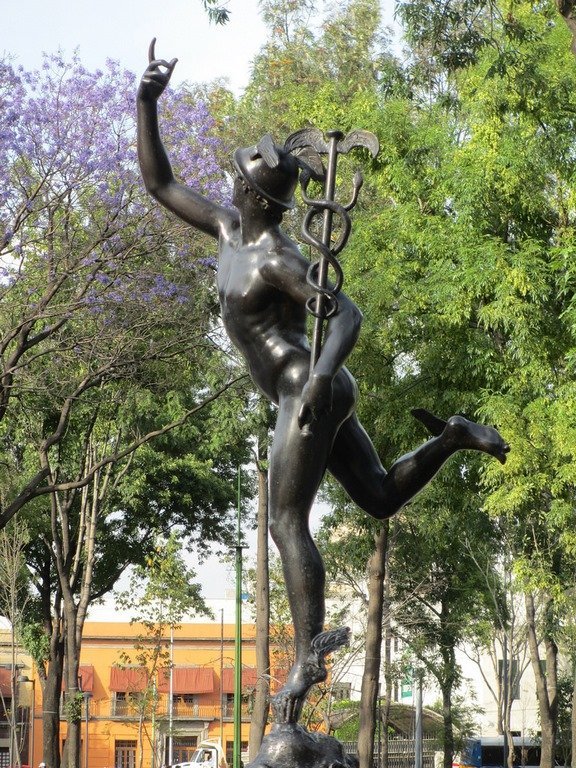
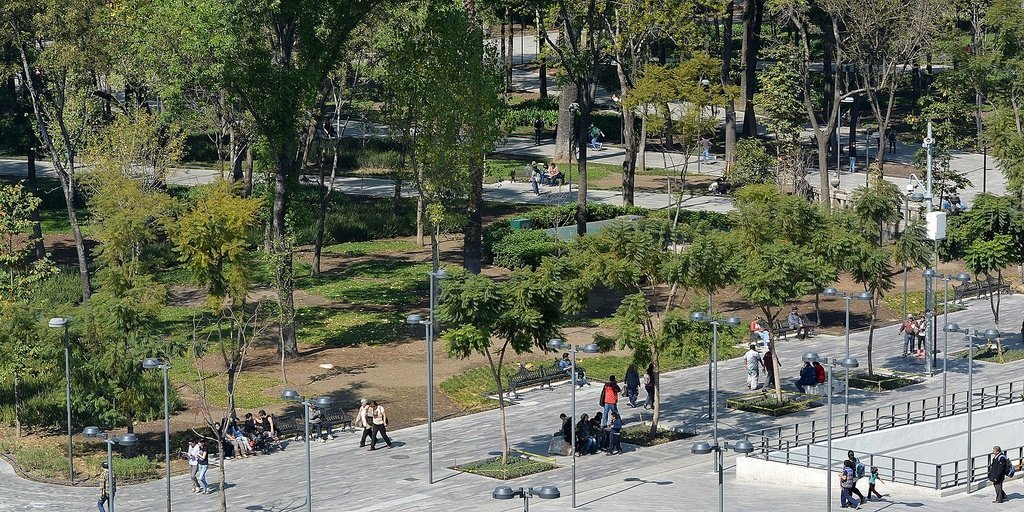


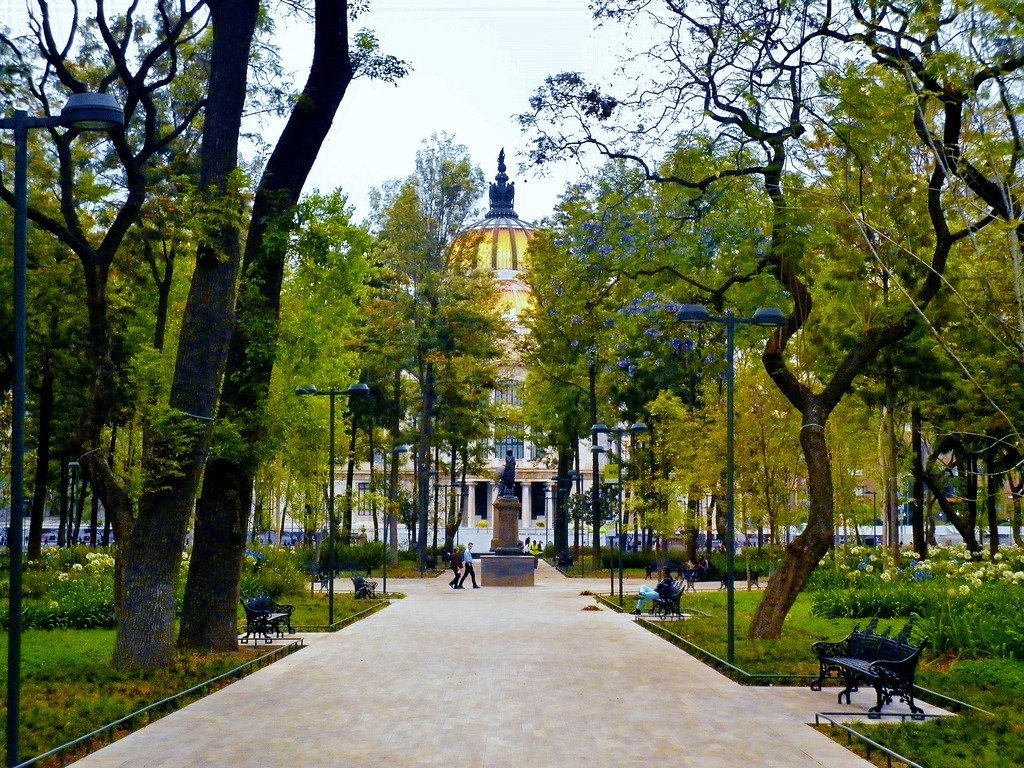
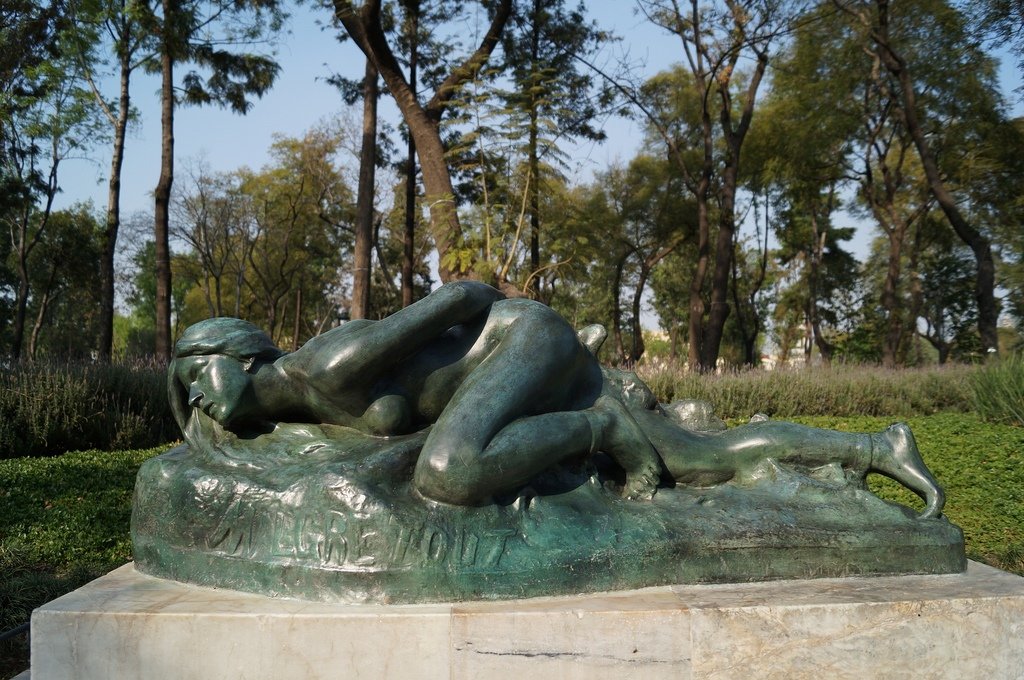

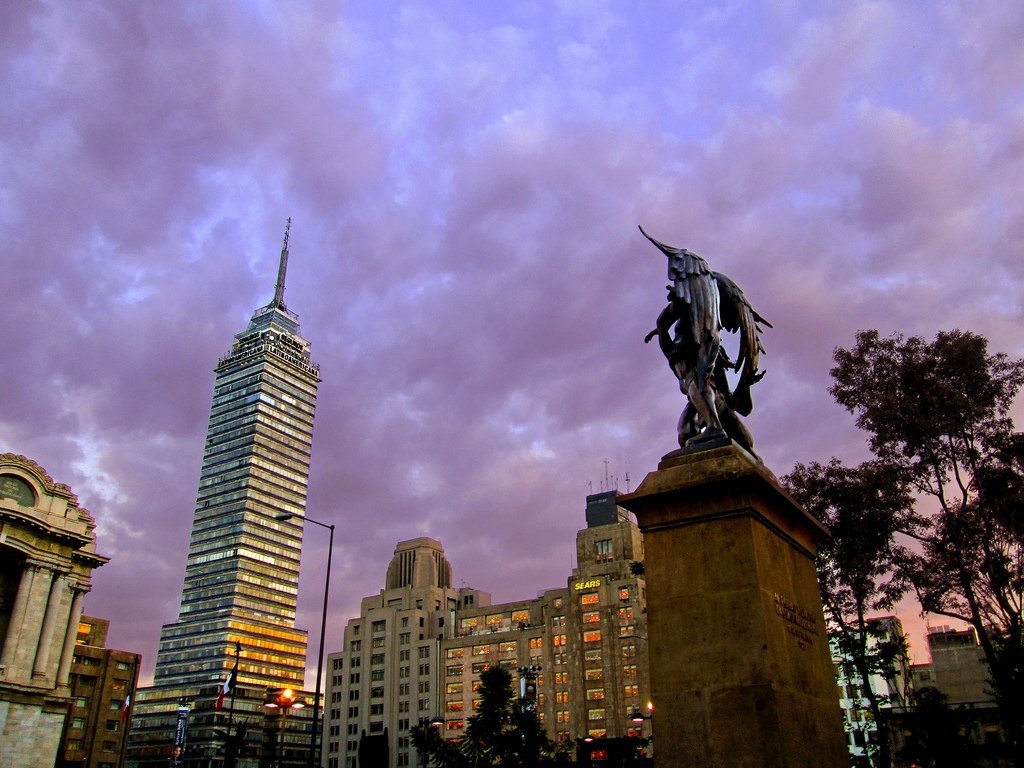
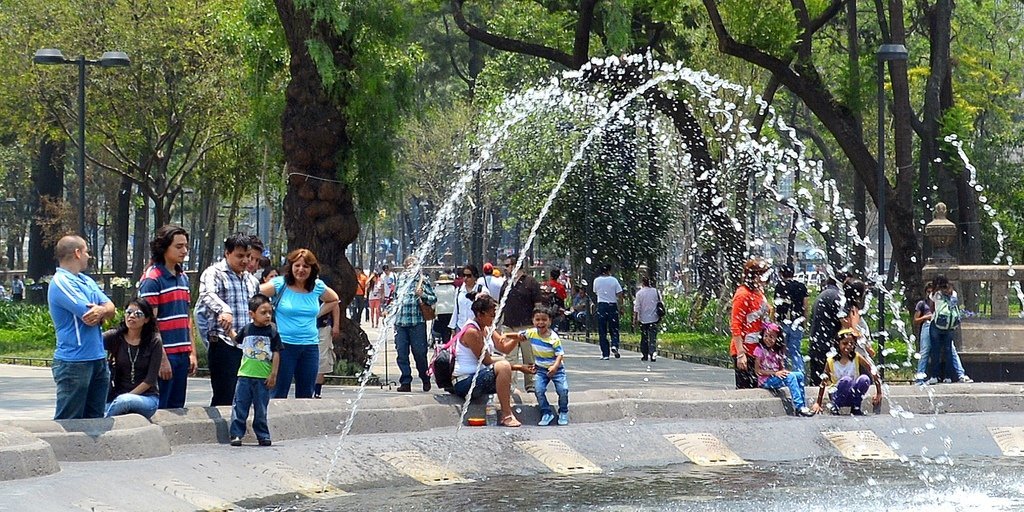

Video: Parque Alameda Central
History
href=’/upload/iblock/018/Skhema-parka-Alameda-Sentral.png’ class=”fancybox” >Schematic diagram of Alameda Central ParkThe name “Alameda” comes from the Spanish word “álamo”, a poplar tree that has always made up the bulk of the park’s flora. Luis de Velasco, who represented the Spanish crown’s interests in Mexico, understood the need for a place where one could relax among the mighty trees. Thus, in the western part of the city, which after the destruction of the Aztec capital Tenochtitlan in 1521 took concrete shape, and appeared a green “island” Alameda Central.
.
The park was originally half the size and stretched from the Palace of Fine Arts to the cenotaph of Emísiclo a Juárez. In those days, the western part of the Alameda was set aside as the Plaza El Cemadero, or the Blazing Place. The name had a sad origin: previously people accused of witchcraft were burned here. By the 1760s, the Inquisition had ceased its activities, and the park was taken over by Viceroy Marques de Croix, who began to expand it. In 1791, Count Revillagigedo did the same, erecting a wooden fence around the Alameda to keep out the common people. After gaining independence status, the park became the site of mass celebrations, festivities and festivals.
.
The last reconstruction of Alameda Central lasted from May to December 2012. The damaged sidewalk was lined with marble, tree seedlings were added to the species composition of vegetation, and benches and fountains were “retouched”. The main innovation was the prohibition of street vending in the park.
Emísiclo a Juárez is Alameda’s most revered and notable monument. It is a kind of symbolic burial place for the remains of Benito Juárez, the “Mexican George Washington” as the people of Mexico City call him. The monument was erected in 1910 by order of Porfirio Diaz. Architect Guillermo de Heredia used Carrara marble, which is considered one of the most valuable. The Italian Lazzaroni worked on the sculptural composition.
.The Emísiclo a Juárez is in the neoclassical style. In its early days, the monument served as a landmark for meeting participants in rallies and marches. Now it serves as a symbolic entrance to Alameda Central. Nearby is the Biketitlan bicycle rental center for touring the Mexican capital. The price for a four-hour escorted tour is $40 USD (adults) and $27 USD (children).
.Facing the monument, you can visually delineate the park into two parts: left and right (there is no official division). This makes it easier to navigate during the walk.
.
Behind the Emísiclo a Juárez is one of the most beautiful and largest fountains in Alameda, the Fuente de la Virgen (Fountain of the Virgin). The jets spurt from the carved parapets into the center, where a statue of a nude woman with an anchor in her left hand sits on a three-tiered sculpture. The first level is decorated with four figures of babies, the second with sculptures of seagulls. A few steps away from the fountain is a newsstand.
.Left Sector
Walking from the kiosk to Avenida Hidalgo and turning left, you can walk to Balderas Street, which branches off from the avenue and runs parallel to it. At the intersection you should turn left again, straight to Fuente Heyser Hidalgo (Geyser Hidalgo), which stands on the corner of the park. It is a small circular fountain, from the center of which a jet of water shoots upwards for a meter and a half.
.
Continuing down Avenida Dr. Mora, you can see two Alameda landmarks at once – a sculpture of German encyclopedic scientist Alexander von Humboldt and Fuente de Mercurio (Mercury Fountain). The street leads to another corner of the park, which features another geyser fountain (this time named after Juarez). A path just beyond it leads to the Fuente de Neptuno (Fountain of Neptune). Standing near it, you can see the Emísiclo a Juárez visible through the tree tops, which is the place to go to.
.Right Sector
Bypassing the monument and turning right, tourists will approach the Fuente de Venus (Fountain of Venus), from which two paths diverge in different directions. One of them can be used to approach the monument to Mexican President Francisco Ignacio Madero on horseback, the other to the monument to Ludwig van Beethoven.
. In addition to the above fountains and monuments, there are also less significant ones located in the park. So don’t worry: in Alameda you can make really many colorful photos..
What to see near the park
Alameda Central is surrounded by several of the capital’s museums, where you can take your mind off the vegetation and the monotonous gurgling of the park’s fountains.
Near the Beethoven Monument, there is a magnificent view of the end of a marble building in the Art Deco and Beaux-Arts styles. This is the Palais des Beaux-Arts, the capital’s most famous opera house. In addition to halls with impeccable acoustics, the Palace also houses museums: the National Museum of Architecture and the Museum of the Palace of Fine Arts. Those who wish to see the expositions can visit them for free by coming here on Sunday. On other days the ticket price reaches 3 USD and 4 USD respectively. For the right to take photos and videos you will have to pay 2 USD. Both museums are open from 10:00 to 18:00. Don’t forget that Monday is a day off not only for the Palace expositions, but also for many museums in Mexico City..Once around the Opera House on Angela Peralta Street, turn right and cross to the opposite side. Moving along Avenida Hidalgo in the direction of the Catholic Church of Santa Veracruz and turning right, you can see two museums at once – the National Printing Museum and the Franz Mayer Museum. The exposition of the first will please those tourists who are interested in the history of Mexican graphics. Connoisseurs of applied art should look at the second museum. A ticket will cost 2 USD. The National Printing Museum is open Tuesday through Sunday from 10:00 a.m. to 6:00 p.m., while the Franz Mayer Museum is open weekdays from 10:00 a.m. to 5:00 p.m. and weekends from 11:00 a.m. to 5:00 p.m.
.Cross again to the opposite side, returning to Alameda Central Park. Go around the perimeter of the park and follow Dr. Mora Avenue to its intersection with Christopher Columbus Street. Near the Café Columbus, turn right to reach the Diego Rivera Museum, a collection of the painter’s colorful frescoes. The exhibits are open all week from 10:00 to 18:00. Tickets are $1 USD.
.Back to Emísiclo a Juárez and head towards the crosswalk. Opposite the cenotaph on the other side of the street is the Museum of Memory and Tolerance, whose expositions tell the story of terrible crimes against humanity and make us rethink the value system of the modern world. The museum is open weekdays from 9:00 to 18:00 and weekends from 10:00 to 19:00. Ticket prices are determined by your desire to take a guide or wander around the museum alone: 5 USD and 4 USD respectively.
.Where to eat
Although Alameda Central Park cannot be called huge (especially compared to its “counterpart” Chapultepec), the walk drags on and soon leads to hunger. You can buy a hot dog, which is cooked right on a mobile cart, but it is better to spend a few minutes to find a cozy place with a rich menu and reasonable prices.
.
Among inexpensive establishments, tourists prefer Cielito Querido Cafe and La Cervecería de Barrio Alameda seaside restaurant. For 10-15 USD you can eat to your heart’s content and exchange impressions from a walk through the park while enjoying appetizing dishes.
.
The menu at Cancino Pizza and Salón Sol Grill Bar is average priced. Dinner for one person will cost 15-20 USD.
.
Miralto restaurant is suitable for tourists who are used to luxurious atmosphere and fine cuisine. On average, each visitor leaves about 25-30 USD for a multi-course lunch..
There are other cafes around the park, but if you want to meet polite staff and taste the capital’s delicacies, welcome to the above-mentioned establishments!
.How to get there
Alameda Central is located in the city center, so tourists can reach the park in any of three ways:
.
- by bus CCE1/A to Madero stop; #4 to Bellas Artes stop; LL to Avenida Hidalgo or Paseo de la Reforma (Shcp); #76, 76-A, 76-X and 76-A-X to Avenida Paseo de la Reforma – Metro Hidalgo stop (fare is 0.2 USD);
- by metro for 0.2 USD to Bellas Artes (blue line #2 or green line #8) and Hidalgo (green line #3) stations;
- by cab for 5-10 USD to Av. Hidalgo s/n, Cuauhtémoc, Centro. .
